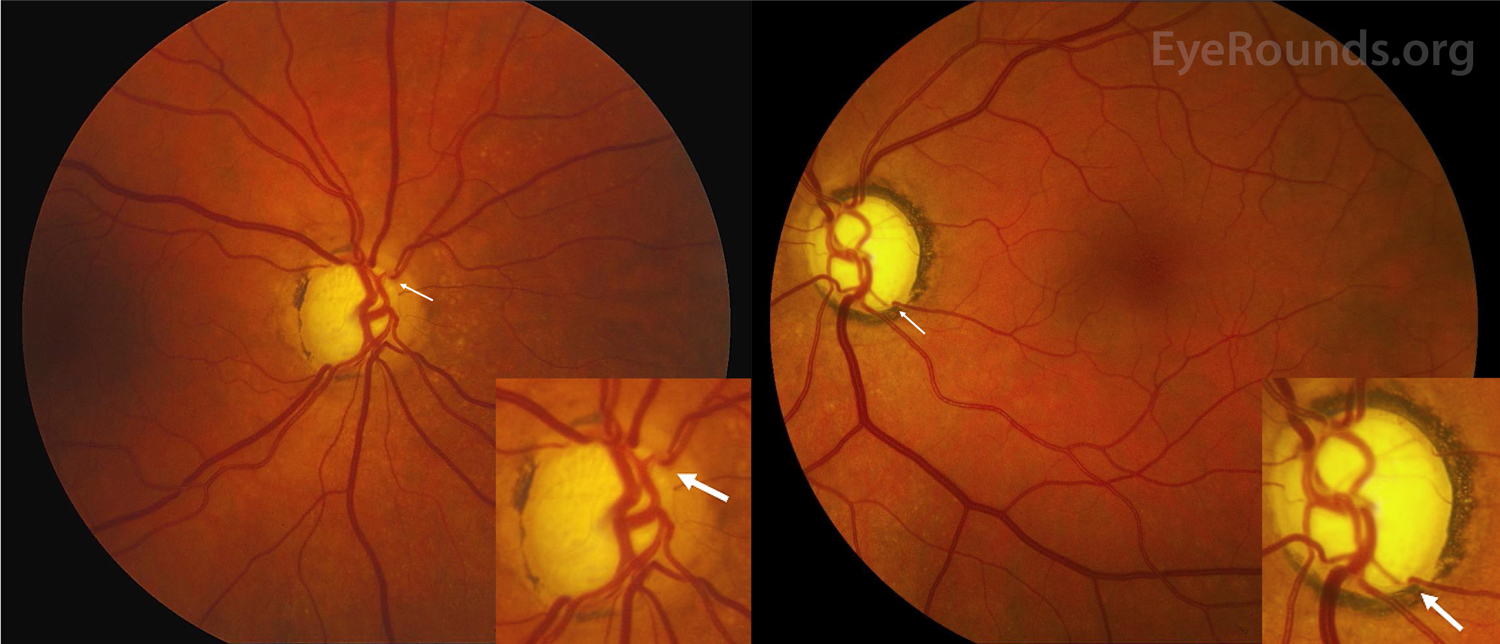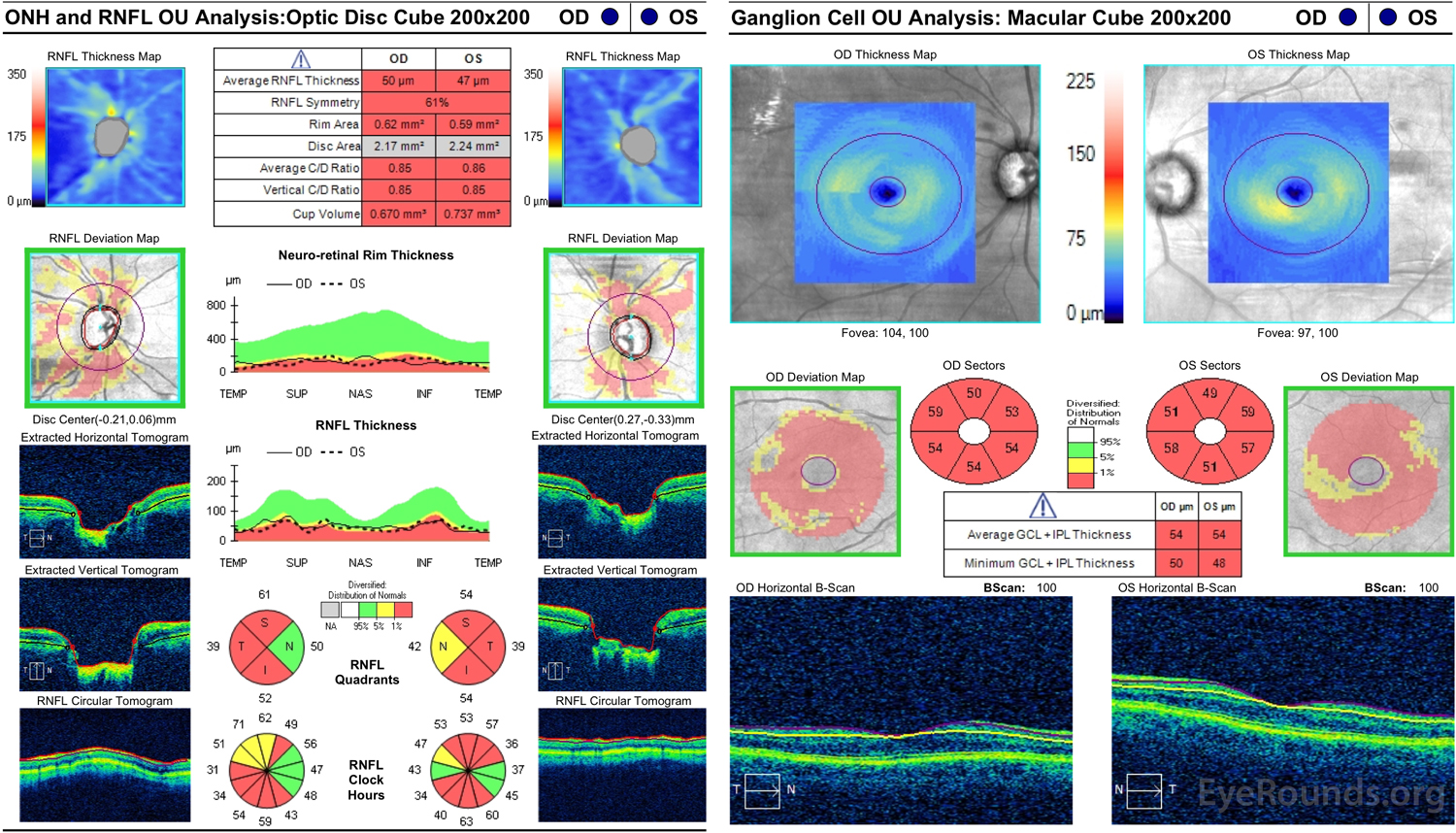
Glaucoma is an optic neuropathy characterized by remodeling of the optic nerve head with loss of neural tissue resulting in distinctive visual field defects [1]. It is the leading cause of irreversible blindness worldwide, and by the year 2040, an estimated 111.8 million individuals will be affected [2]. Historically, visualization of the optic nerve head has been used to assess disease severity. The optic nerve head contains a cup which is delineated by the neuroretinal rim. Normal cup-disc ratios range from 0.1 to 0.4, but as neural rim tissue is lost, the cup progressively enlarges and the underlying lamina cribrosa becomes more apparent [1]. In severely advanced glaucoma with complete loss of retinal tissue, retinal vessels may disappear as they make a sharp turn into the cup, termed bayoneting or "bean-pot" cupping. Deeper vessels as they re-emerge may appear out of focus [3].



Ophthalmic Atlas Images by EyeRounds.org, The University of Iowa are licensed under a Creative Commons Attribution-NonCommercial-NoDerivs 3.0 Unported License.